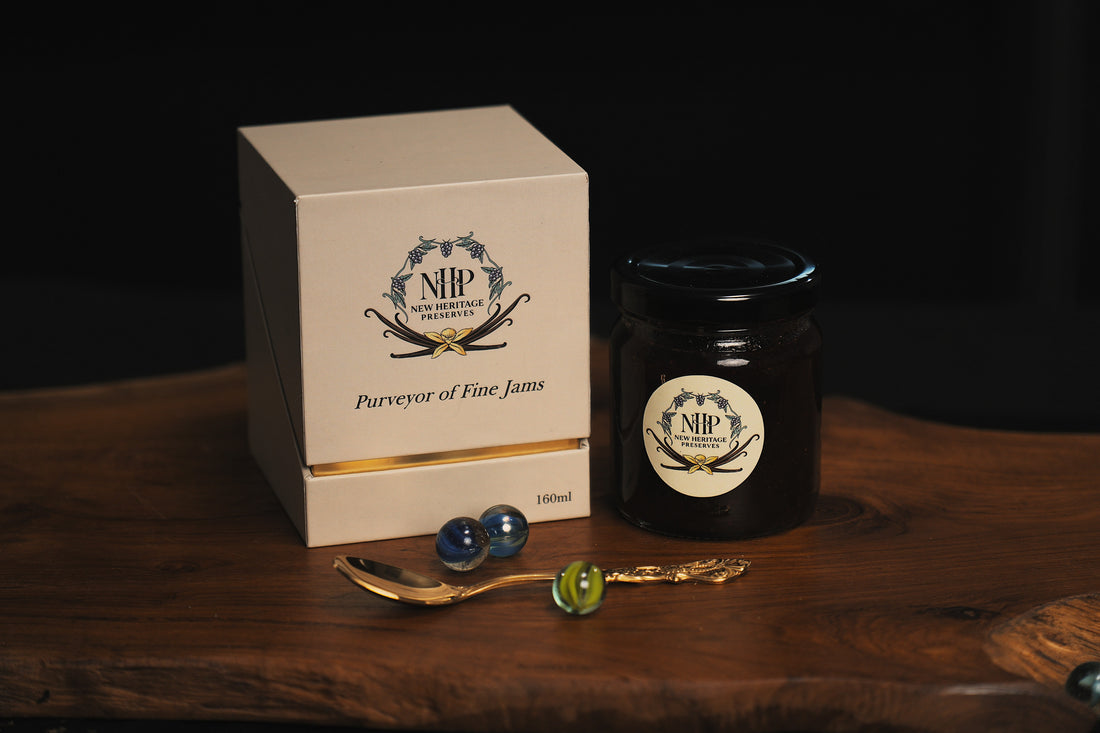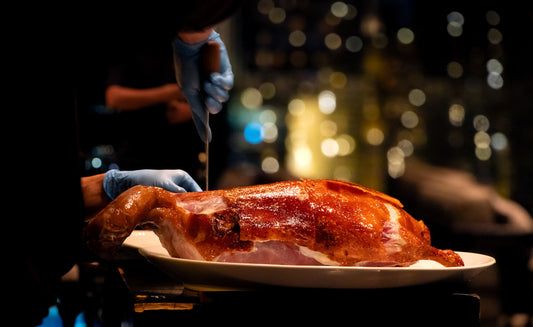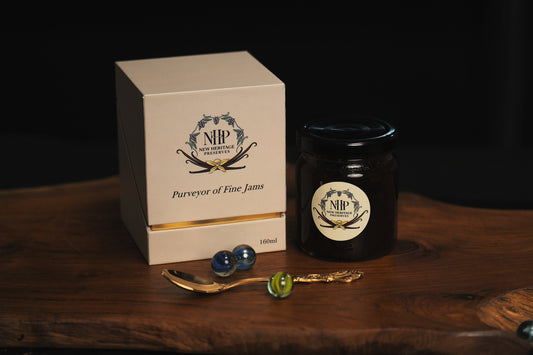
Preserves 101: What Makes This A Jam?
Share
In the realm of fruit preserves, the terms jams, jellies, compotes, and marmalades, each denote distinct culinary creations, each with its own unique character and application. Sometimes, the fine differences can get a bit confusing, and so here's a breakdown of what each term means so you can get the correct product to best suit your needs.
Jams typically start with lightly crushed or diced fruits depending on the size of the whole fruit, which are then cooked down to thicken. The result is a mixture of poached fruits and softly set gel that makes for a wonderful contrast in texture when serving on hearty loaves or pastries.
Jellies, in contrast, are usually made from fruit juice that is cooked with sugar and pectin to form a clear, firm gel. However, at New Heritage Preserves, we start by poaching fresh whole fruits like apples instead. We then strain and purify the solution several times to obtain a clear liquid packed with the natural flavour of the base fruit. Due to the purer flavour and texture, jellies go best with lighter breads like milk breads or brioche.
Compotes consist of whole or chunked fruits simmered in a syrup, sometimes enhanced with spices or a splash of liquor. This usually results in firmer fruits, and a thinner syrup than jams.
Finally, Marmalades are a type of jelly that includes pieces of citrus rind suspended within the gel. Originating from the Portuguese word for quince, "marmelo," marmalades are most famously made from bitter Seville oranges. The inclusion of citrus rind imparts a distinctive tangy flavor and a slightly chewy texture, making marmalades rather unique.
In summary, while all these preserves celebrate the essence of fruit, they differ in preparation methods, textures, and flavor profiles. Find your favourite type at New Heritage Preserves to suit your culinary needs.


